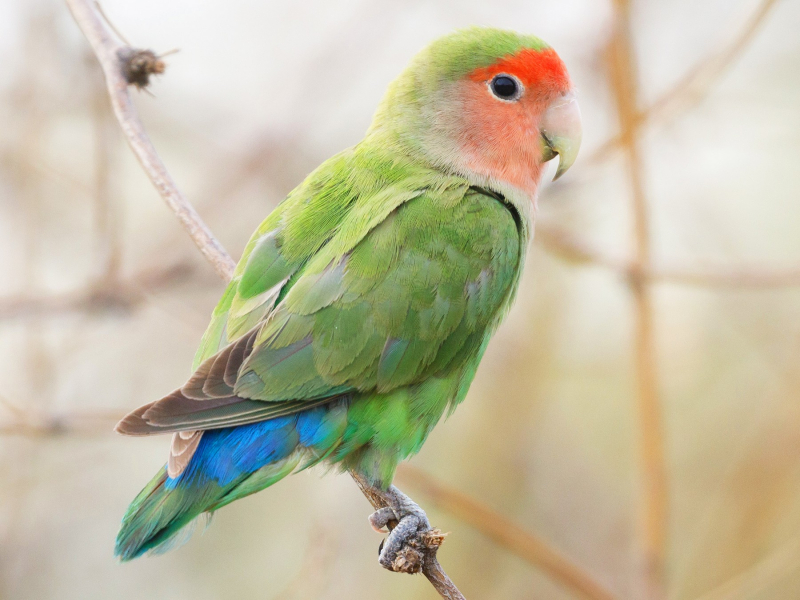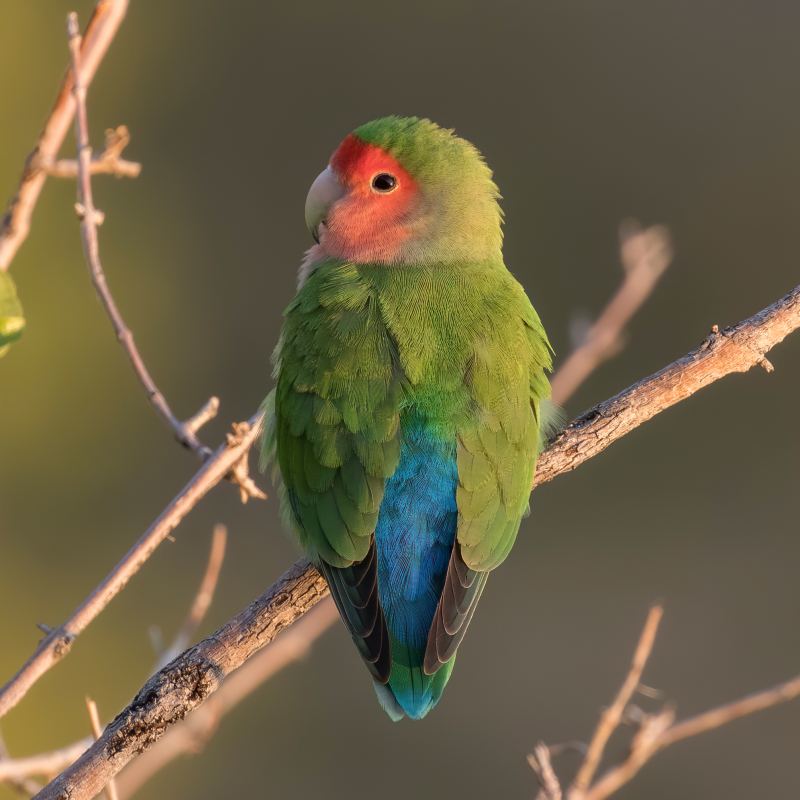Rosy-Faced Lovebird

The Rosy-Faced Lovebird (Agapornis roseicollis), also known as the rosy-collared or peach-faced lovebird, is a species of lovebird native to arid regions in southwestern Africa such as the Namib Desert. These gregarious birds typically congregate in small groups in the wild and chirp loudly and continuously. They eat throughout the day and frequently bathe. The distinctive sleeping position of lovebirds, where they sit side by side and tilt their faces inward, is well known. It is also well known that females cut raw materials into long strips and "twisty-tying" them to their backs before flying long distances back to create nests. They are common in the pet industry.
The rosy-faced lovebird is a little bird, measuring 17 to 18 cm in length, with average wing and tail lengths of 106 and 44 to 52 mm, respectively. Wild birds have a blue rump and a green body. The forehead and area above the eye are the darkest parts of the pink face and throat. The iris is brown, the legs and feet are grey, and the bill is colored like a horn. Compared to the A. r. catumbella, the A. r. roseicollis has a paler pink color. Young birds have a brownish base to their beak, a pale pink face, and throat, and a greenish fore, and crown. Male and female birds have the same plumage.











